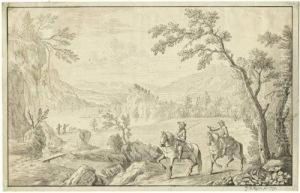Johann Heinrich Mezger Paintings
Johann Heinrich Mezger was not an artist in the traditional sense of painters or sculptors; rather, he was a pioneering figure in the field of physiotherapy, particularly known for his contributions to the development of massage techniques. Born in 1838 in Amsterdam, Netherlands, Mezger's work laid foundational stones for modern physical therapy practices, influencing the therapeutic techniques used for muscle and joint conditions.
Mezger's interest in medical sciences led him to study medicine, and he quickly became fascinated with the therapeutic potential of manual manipulation and massage. At a time when the medical community was skeptical about the benefits of such practices, Mezger's clinical successes in treating various musculoskeletal conditions won him widespread recognition. He treated numerous high-profile patients from across Europe, which helped in garnering attention towards massage therapy as a legitimate and effective treatment method.
Throughout his career, Mezger developed and refined several techniques that are still in use today, including effleurage (light stroking), petrissage (kneading), and tapotement (rhythmic tapping). His methods were instrumental in treating sports injuries, thus contributing significantly to the field of sports medicine as well.
Despite his focus on physiotherapy, Mezger's influence can be seen as an art form in itself, where the human body was both his canvas and medium. He died in 1914, leaving behind a legacy that transformed the approach towards physical rehabilitation and therapy. His contributions have made lasting impacts, establishing him as a key figure in the history of physiotherapy.

